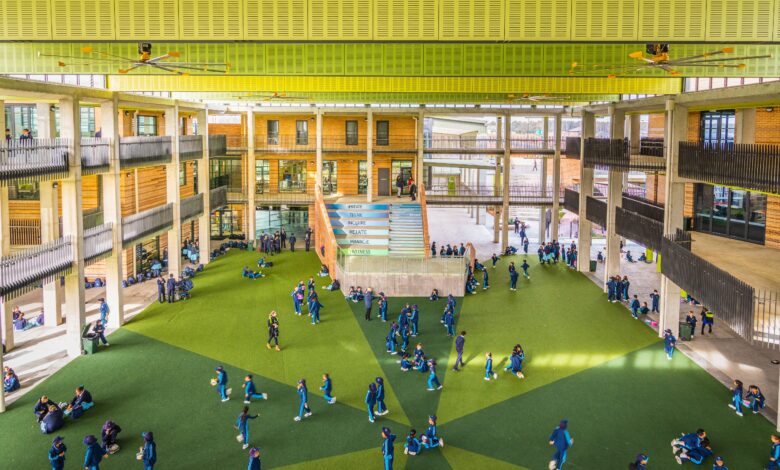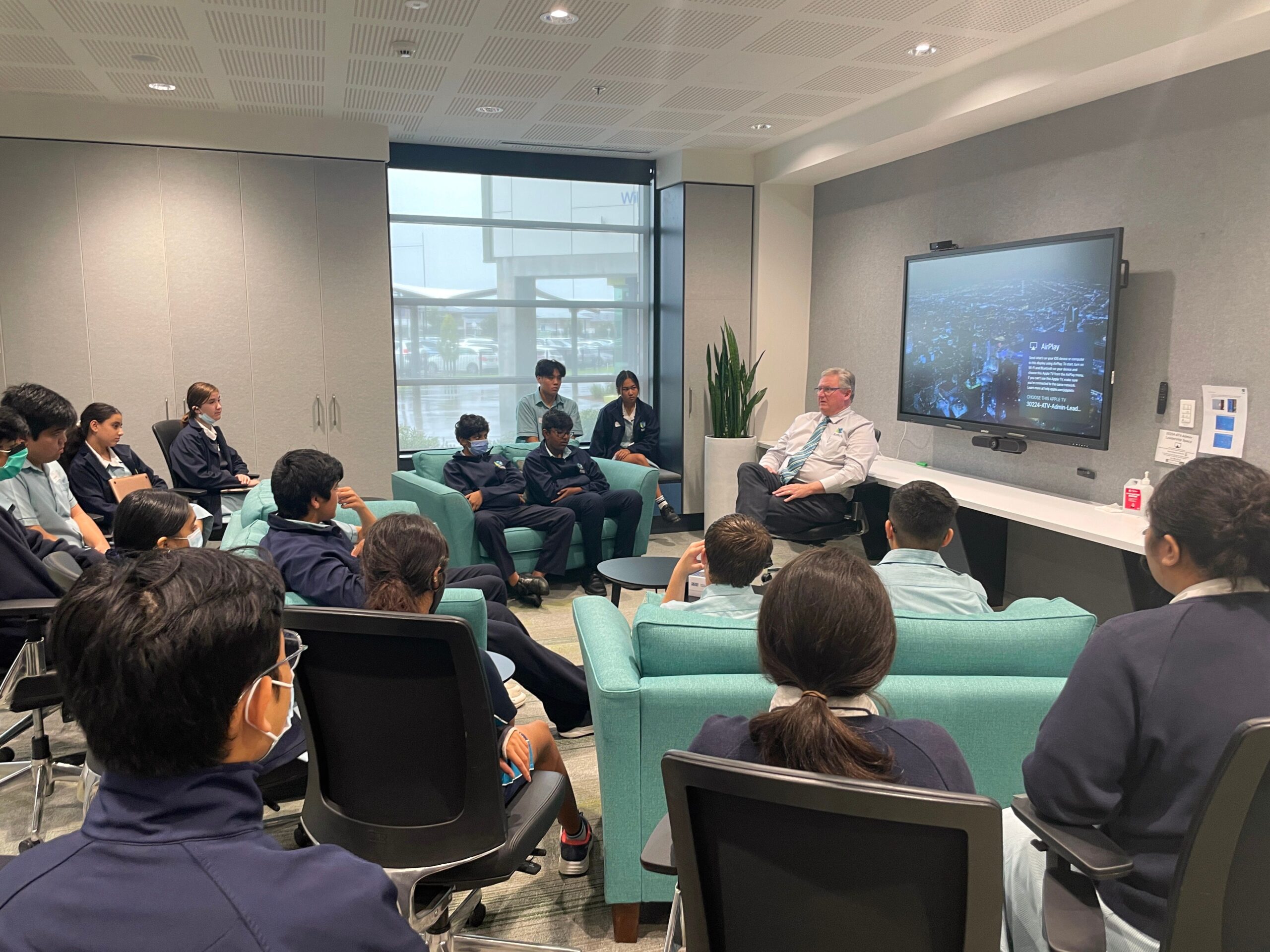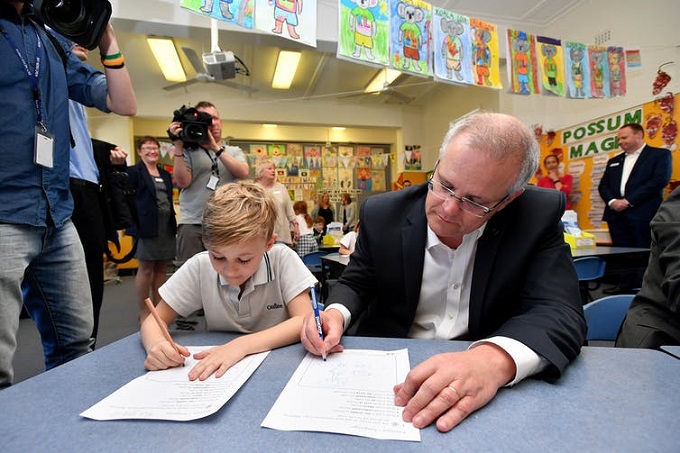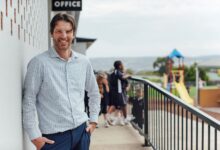Principal Speaks: The challenge to build a contemporary, cutting-edge curriculum
2022 has presented a convergence of challenges for primary and secondary education. For me, the greatest challenge has been developing an engaging curriculum that empowers students to fulfil their potential.

The key to meeting this challenge has been acknowledging that young people can learn anywhere, at any time, and not just within the hours of 08:30 and 15:00, Monday to Friday.
Students are increasingly falling short of achieving their full learning potential, according to Australian research. A comprehensive review of the New South Wales Curriculum found that the overcrowded nature of many syllabuses, the undervaluing of skills in the curriculum, and constraints on teachers’ abilities to address individual learning needs, contributes to many students becoming disengaged from school.

The Australian curriculum lacks flexibility. It is anchored in one-year blocks of time. We group students by age to learn the same things with the same amount of time, regardless of each student’s learning achievement. It is not surprising that some students struggle while others disengage and withdraw.
According to the OECD’s Programme for International Student Assessment (PISA), by 15 years of age, one-in-five Australian students fails to achieve a proficient standard in the fundamental foundations of literacy and numeracy. Year-level curricula contribute much to this reality. However, despite our knowledge of this, schools persist with what Ira Socol calls a, “nonsensical calendar system in which the clock overrules the idea of doing what you do well”.

At St Luke’s Marsden Park, we have combined academic research and local data accumulated prior to, and during, the COVID disruption period, to use time differently and better. This includes, but is not limited to the following:
Friday Half-Day
This is an initiative that sees formal learning conclude at 12pm each Friday for students in Kindergarten to Year 6. At midday, students are either picked up by their parents or remain at school to be cared for by reduced staffing. The additional release time allows teachers to provide an explicit piece of feedback about each child’s learning, which can be accessed by their parents via an online learning platform.

Late Starts For Years 9 to 12
With this initiative, on three days per week—as part of the St Luke’s Learning Cycle—students can choose between:
- Arriving at school by 8:30am to consolidate their learning from a previous lesson or prepare for an upcoming lesson under the supervision of teachers.
- Working from home to consolidate their learning from a previous lesson or prepare for an upcoming lesson and then come to school at 10:30am.
- Sleeping in and transferring their learning time to another part of the week.
The results
Each of these two initiatives have resulted in benefits, such as increased time release for teachers and increased choice and agency for students and parents. Moreover, we are just scratching the surface at St Luke’s and need to press on and continue exploring how we can dismantle the rigid foundations of 20th Century education and liberate learning from its industrial straitjacket.

Education the world over needs to adopt what Saul Kaplan calls a “Best Practices and Next Practices” approach. Kaplan explains that in this rapidly changing world, best practices are necessary but not sufficient. Kaplan challenges leaders to explore, identify, develop, and experiment with next practices.
One such next practice needs to enable the development of an adaptive curriculum, scaffolded, and supported by immersive technologies such as machine learning, artificial intelligence, augmented and virtual realities, which acknowledges students not by age but by ability. Such respect given to students may lead us to explore models such as the one driven by Dwayne Matthews at Ontario Virtual School (OVS).

Implementing the principle of ‘Time Shift Accreditation’ with integrity, sees OVS enable 10,000 students to learn virtually, usually through time chunked videos of two to four minutes. These videos provide content and concepts accredited specifically to the core curriculum. If a student hits a hurdle, they seek support from their immediate network, usually other students, for assistance. If they meet another hurdle they go to an expert, usually a teacher, who assists the student to progress.
Most students accelerate their way through the curriculum in less time than indicative hours, as usually provided through face-to-face teaching in mainstream schools. This approach leaves more time for self-directed learning in areas of interest and passion. Not only does this reality see increasing engagement, it empowers students to make a real difference in their world!

It goes without saying that responding to the challenge of providing all students with a contemporary, cutting-edge curriculum that empowers them as a learner, presents us with an opportunity to ‘design the next’ by exploring best use of time for student learning. New ways of learning may also result in more enriching ways of working for teachers. The two are not mutually exclusive!
Who knows, we might even equip every child to be a creative, connected and engaged learner in a rapidly changing world while cultivating an adaptive, innovative, and continuously improving education system: two priorities of the Australian Government’s “Growth Through Achievement” report.
Author: Greg Miller, Principal, St Luke’s Catholic College, Marden Park
For all the latest industry news and opinions, check out the latest issue of our magazine here.







